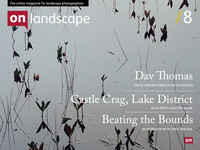Featured photographer

Tim Parkin
Amateur Photographer who plays with big cameras and film when in between digital photographs.

Dav Thomas
Tree loving photographer, mainly using large format film cameras but also flirts with other formats.
Working out of Sheffield on the edge of the Peak District, Dav Thomas has created a portfolio of images that bring together the essence of some of this national park's wild places. His pictures eschew the vista for the characterful portrait of the ingredients that make up the environment. Trees, gritstone, grasses - the results, usually captured on film - vividly portray the areas usually ignored by photographers.
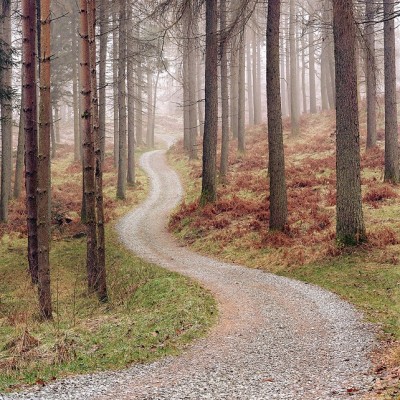 In most photographers lives there are 'epiphanic moments where things become clear, or new directions are formed. What were your two main moments and how did they change your photography?
In most photographers lives there are 'epiphanic moments where things become clear, or new directions are formed. What were your two main moments and how did they change your photography?
I think the turning point for me came with a visit to the Joe Cornish gallery in Northallerton. I was becoming more and more dissatisfied with my digital equipment, at the time a Nikon D200 and a Kodak DCS Pro and had a nagging voice in the back of my mind telling me that large format was the way to go. After the visit to Joe's gallery I knew this was the way forward for me – I was totally blown away by the quality of the images (I realise this wasn't just down to equipments and was just as importantly about Joe's skill), the details worlds apart from the tiny digital files and the Velvia tones were stunning. I think I ended up buying my 4x5 camera about a week later and haven't looked back.
I suppose a moment that stands out in my mind was something Joe told me when I was out on a one day workshop with him soon after I got that first large format camera. I think my photography at that stage was quite run of the mill, wide angle, sunsets, views – he said something along the lines of – don't take photos that you expect people to like, take photos that you like and if you're any good sooner or later people will start to take interest in your work. Horribly paraphrased Joe, sorry! This is something that has lived with me and is advice I pass on to others. These days I don't follow trends or make 'keep your granny happy' photos, I just shoot compositions in the landscape that interest me despite others might think to them.
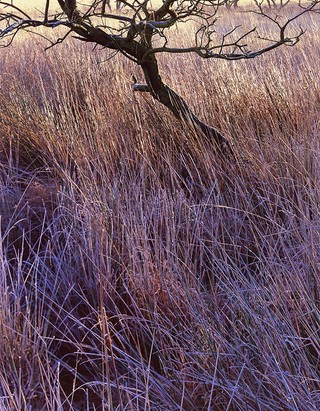 Much of your photography has been taken with an 4x5 camera but many of your photographs are square. Do you use a combination of 4x5 and medium format or do you crop your images?
Much of your photography has been taken with an 4x5 camera but many of your photographs are square. Do you use a combination of 4x5 and medium format or do you crop your images?
I used to have a Hasselblad which I really enjoyed using but the problem was, I couldn't feasibly take the 'Blad out with its 3 lenses and my large format equipment at the same time - I tried a few times but I had to compromise on both in a bid not to do my back in! So I ended up just taking the 'Blad out on its own and often ended up disappointed that I didn't have my large format equipment with me when a composition arose that required LF movements. So in the end I reluctantly sold the 'Blad and I now work with the large format camera and digital SLR on occasion.
I have two options with the large format - I either work with a square plastic mask on the back of the camera so I can compose square on the ground glass,using a full sheet of film, or I use a smaller mask and use a 6x6 roll film back for the large format. The good thing about using the roll film back is that the cost per shot is reduced meaning I can bracket if I'm not feeling confident about the exposure (I know, it does happen!). The crop factor effectively means that I can use my 300mm large format lens as something like a 450mm in 35mm terms. The crop factor also means that I am using the sweet spot of the lens, combined with all the camera movements this means that the results are superior to the 'Blad.
I do love the medium format 6x6 format though, I have an ancient Agfa Isola, equipped with a lovely sharp 75mm lens and a wopping 2 shutter speeds plus B, and 2 apertures which is great to use – the limited controls really focus the mind, making you shoot in a different way. In the future I'd love to get a Mamiya 6.
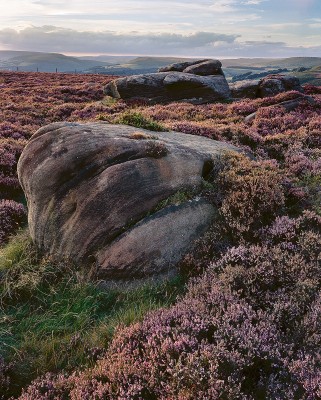 Trees, trees, trees... Well, ok, there are a few other subjects but what is it about our arboreal friends that drives so much of you photography?
Trees, trees, trees... Well, ok, there are a few other subjects but what is it about our arboreal friends that drives so much of you photography?
It's not entirely a conscious decision I must admit! I've always had a love of trees (and I'm a keen woodworker, so I like them in their sliced up state too!), I find their textures and ever changing colours fascinating. On a deeper level I'm moved by their longevity – I know I'm (hopefully) photographing something that is going to live and grow long after I'm gone. I also like the slightly ungainly tree - the underdog that isn't generally noticed by everyone else – this is a repeating theme in my work – the elements in the landscape that are by and large ignored by everyone else – I love the subtle beauty of the landscape more so than grand views.
You are a graphic designer in your other life, how does this affect your photography?
When I set out as a landscape photographer I went down the same tried and tested routes that we are told repeatedly about, I'm not sure where this formula comes from but it goes along the line of – shoot only in the golden hour, use the rule of thirds (ROT!), have a rock in foreground and bolt a super wide angle lens to your camera and don't bother taking it off. It's taken me some time to realise this just isn't me – I was ignoring what I love as a graphic designer, or the minimalism I love in architecture and furniture design. In these things I'm drawn to the smallest details – perfect typography, honest of materials and throughout; attention to detail.
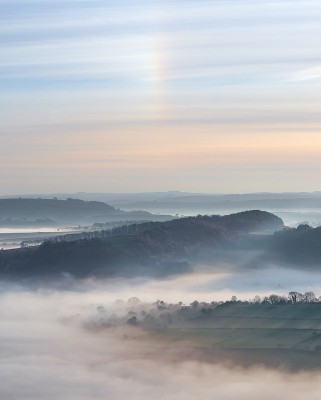 Thankfully now I've turned my back on the populist view and I hope that my photographs are 'designed' in much the same way I might consider a brochure design, piece of typography or a table design, I concentrate on composition, not necessarily obvious, resolved scenes but images with tension and emotion. I would hope that many of my images are more about graphic compositions rather than scenes as such. I s'pose that's why I love shooting in mist and fog so much – it makes images so much more graphic, almost flat – they could in some cases be screen or block prints.
Thankfully now I've turned my back on the populist view and I hope that my photographs are 'designed' in much the same way I might consider a brochure design, piece of typography or a table design, I concentrate on composition, not necessarily obvious, resolved scenes but images with tension and emotion. I would hope that many of my images are more about graphic compositions rather than scenes as such. I s'pose that's why I love shooting in mist and fog so much – it makes images so much more graphic, almost flat – they could in some cases be screen or block prints.
There are many ‘standard’ compositional tricks that are used in a lot of landscape photography. You seem to avoid these quite often and I’m wondering is this a conscious avoidance (too obvious) or just a result of the way you vision works?
I never really consider rules when I compose an image, I'm normally drawn to a small element in the landscape, it may be something like the way two colours sit next to each other or the curve of a branch intersecting another. As in my graphic design work I like to have areas of space – not using 'safe' traditional compositions all the time, I might put the trunk of a tree over on the far side of the frame and leave large areas relatively empty, I also like putting elements right in the middle – I don't think I'd go down well in camera club photo competitions!
As for 'standard' compositions, they're all well and good, but for me they need to have a hook – something different, if I never see another 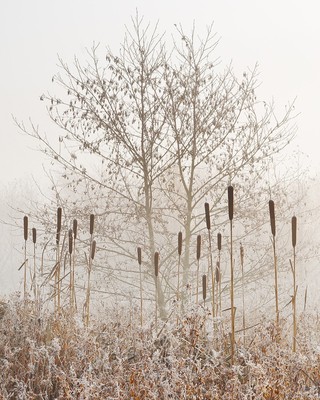 rock with long exposure sea washing around it with a golden sunset kicking off behind it I won't be too sad! If it's a rock that's thoughtfully photographed for a particular reason other than 'we have to have foreground interest' then great, it might make for a photograph I'm interested in. I figured out early on in my photography that if I did wide angle vistas in beautiful light there's little change of me coming up with anything original, do that and you're just going to end up a poor man's Joe Cornish.
rock with long exposure sea washing around it with a golden sunset kicking off behind it I won't be too sad! If it's a rock that's thoughtfully photographed for a particular reason other than 'we have to have foreground interest' then great, it might make for a photograph I'm interested in. I figured out early on in my photography that if I did wide angle vistas in beautiful light there's little change of me coming up with anything original, do that and you're just going to end up a poor man's Joe Cornish.
there is a mix of digital and large format in your work, do you take both cameras out and how do you know which is going to get used?
I often take my digital camera out with me as well as my large format. I have an excellent Photobackpacker Kelty backback which makes carrying a reasonably heavy set of equipment pretty painless (although my backpack is as light as a feather compared to David Unsworth's bag!). At the moment I take out either my Chamonix 045N-2 or Linhof Technikardan 4x5 camera with between 3 and 5 lenses and my Sony a900 with a 28-70mm and 70-210mm. The reason I subject myself to this much weight is really down to the fact that I am limited in focal lengths I can use with the large format, the 300mm is equivalent to about 90mm in 35mm terms, so not much of a telephoto! I find this limiting sometimes and that's when the 70-210mm come out.
I also find myself trying things out on the digital before I get the big camera out and sometimes I know that the light isn't going to stick around for long enough to get the 4x5 set up, so I have to make do with the digital. Still, it's not a bad camera to make do with!
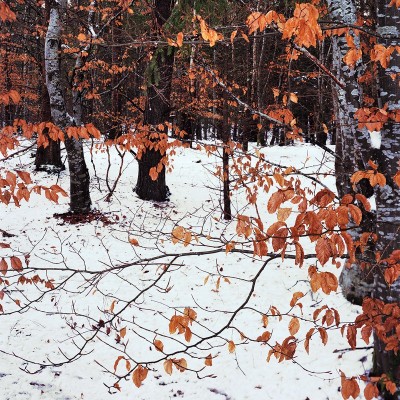 We’ve just spent a long weekend in Manesty, Borrowdale in the company of a few other photographers. How does working in a group like that change your photography (for better or worse)?
We’ve just spent a long weekend in Manesty, Borrowdale in the company of a few other photographers. How does working in a group like that change your photography (for better or worse)?
I think that landscape photography is generally a solitary sport, I like to get caught up in my surroundings and feel a little pressured if others are around wanting to do something different. Thankfully the great bunch of photographers which gathered together in the Lakes were all happy to immerse themselves in the same kind of environments I love to explore so there was no sense of having to move on prematurely.
One of the great benefits of being out with other photographers is that you tend to push each other to stay out longer – when I'm out alone I tend to stay out for 2 or 3 hours then I'm happy to go home and warm my feet up, when you're out with others I find you tend to stay out longer and maybe try out new things in light you wouldn't normally shoot in – it does make for a tired few days afterwards though! It's also interesting to see what other photographers are drawn to, it's fascinating so see great compositions I'd have completely ignored – it's interesting to see how others choose the compositions they choose to photograph.
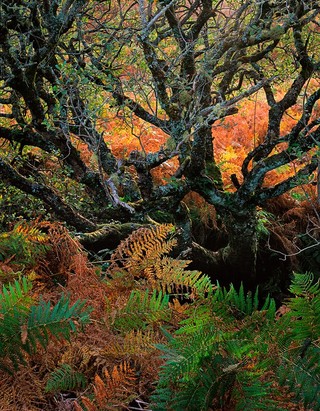 Camper Vans as landscape photography accessory - discuss!
Camper Vans as landscape photography accessory - discuss!
Ahh, my not so trusty VW T25 - Mr O'Leary! Unfortunately my van hasn't seen so much action as a landscape photography accessory over the last couple of years due to me completely stripping out the interior and refitting it all from scratch. It's now getting there though and I intend spending more time away - they do make for a great base when photographing away from home – it makes getting up for sunrise (if you're in to that sort of thing) a whole load easier because you're already at your location and it's a fantastic being able to get back to the van to put the kettle on and cook up a decent breakfast. I'm looking forward to a tour around Scotland for a week in April - I'll have to get the clutch sorted first though!
As a web developer/designer, what irks you most about landscape photography websites..
I suppose the most annoying thing for me is tiny images and massive watermarks, there's no way you can engross yourself in a photo if it's got the photographer's name scrawled all over it! I'm not entirely sure such paranoia is necessary, if you are displaying your images at 600 pixels across it's unlikely that anyone is going to pinch it and do anything with it. I also dislike Flash based websites, with the advent to jQuery and HTML5 there really shouldn't be any need for difficult to navigate, slow loading Flash sites. It should be pretty easy to design a website for a photographer, all you need to do is let the photos do the work. That said I really need to have a look at re-designing mine - if only there were more hours in the day!
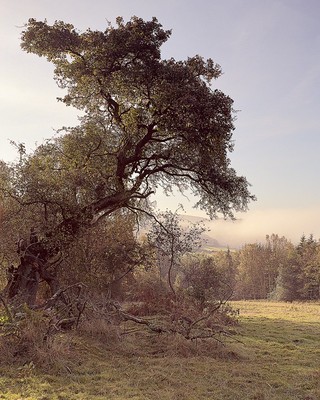 What sorts of things do you think might challenge you in the future or do you have any photographs or styles that you want to investigate? Where do you see your photography going in terms of subject and style?
What sorts of things do you think might challenge you in the future or do you have any photographs or styles that you want to investigate? Where do you see your photography going in terms of subject and style?
Well I suppose I need to photograph less trees! I'm currently working on a project based in the Peak District the idea of which is to investigate a relatively select area and revisit it over a matter of months, years even, to get to truly know it. This is a project I'm shooting exclusively in square format and I'd hope it will be a big enough body of work to present as a book and an exhibition (but who know's when it'll be ready!).
My aim as I move forward in photography is to keep on exploring what it really is that draws me to the landscape and try to present the emotion I feel when I'm in an environment as successfully as possible to the viewer. I suspect my photos will become more insular and even less popular!
Who do you think we should feature as our next photographer?
I'm a big fan of Pete Hyde's work. As for 'Master Photographers', you've already featured a few of my favourites – Jan Tove and Eliot Porter, but it'd be great to see Shinzo Maeda, Christopher Burkett or Paul Wakefield.
Thanks to Dav for some great answers - you can see (and purchase!) some of Dav's large framed prints at the Hassop Railway Station cafe in the Peak District (http://www.hassopstation.co.uk) and he will also be taking part in the Derbyshire Open Arts weekend there on 28-30th May. His next talk is at the Nottingham and Notts Photographic Society (www.nnps.org) on the 8th March where he will be talking about using the large format camera, composition and showing work from his on going 'From edges' project. You can also visit his website at http://www.peaklandscapes.com
Dav also runs large format and advanced digital workshops with Tim Parkin including one day intensive large format workshops where all the large format equipment is provided, weekend and week long large format workshops and weekend composition workshops. Find out more at http://www.landscapephotographyworkshops.com

